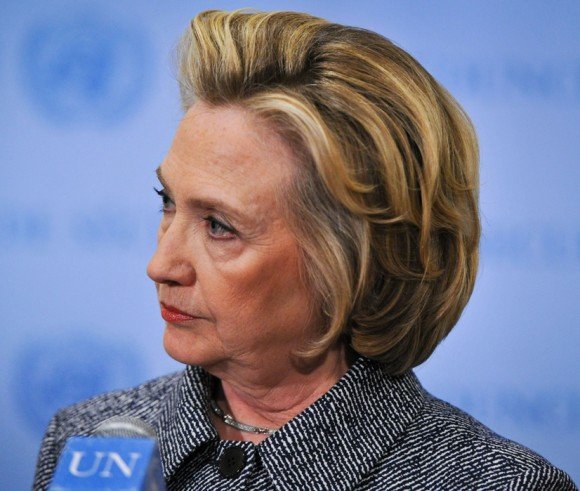America
Twitter facial analysis reveals who is with Trump or Hillary

Washington, March 19
A facial analysis of Twitter users has revealed interesting demographics of the US presidential campaign followers, suggesting that while Hillary Clinton enjoys substantial female support among politicians, there is good evidence that her support among average Democratic women has fallen sharply.
However, this does not seem to have influenced the gender balance among her supporters on Twitter as women make up 45 percent of her followers, said a team of researchers from the University of Rochester, New York, who analysed the Twitter follower demographics of Donald Trump and Hillary Clinton.
They found that Trump has an almost identical level of support at 45 percent. "Apparently Trump’s feud with Megyn Kelly has not alienated female voters,†said lead researcher Yu Wang.
In particular, they look at each user’s picture and use a machine-learning programme to determine whether it shows a male or female and to identify that person’s ethnicity.
At that time, Trump had seven million followers and Clinton 5.7 million, MIT Technology Review reported.
The analysis by Wu and co was straightforward as they studied both candidates’ followers, their user names, geographical information and each follower’s number of followers to determine their influence.
The racial diversity among the followers is a different story.
According to Wu and colleagues, Clinton’s supporters are more likely to be African American or Hispanic than Trump’s who are more likely to be white.
“This pattern in Twitter sphere is consistent with historical voting patterns,†they noted.
The analysis of followers’ ages is put in perspective by the stereotypical idea that Republican Party followers tend to be old white people.
And indeed, Wu says Trump’s followers contain more old people than Clinton’s.
However, Trump also has more very young people, although many of them do not appear to be old enough to vote. Clinton has a stronger presence among the 18 to 40 age group.
The analysis of the social status of each candidate’s followers is curious.
“We find that individuals with only a few followers and individuals with hundreds of followers make up a larger share in the Trump camp than in the Clinton camp, while by contrast individuals with a few dozen to 200 followers have a larger presence among the Clintonists,†Wu noted.
That’s an interesting approach that has plenty of potential.
“Facial analysis can clearly provide significantly more detail than is available from the other information available on Twitter.
“In particular, it would be interesting to see how the follower profiles for each candidate vary throughout the campaign and, in particular, in response to events in real time,†the authors added.
When Barack Obama won the 2008 presidential election, a crucial part of his campaign turned on his radical use of Facebook and Twitter to secure a substantial following.
Today, social media is a powerful weapon in the armoury of all candidates on the 2016 election trail.
However, this does not seem to have influenced the gender balance among her supporters on Twitter as women make up 45 percent of her followers, said a team of researchers from the University of Rochester, New York, who analysed the Twitter follower demographics of Donald Trump and Hillary Clinton.
They found that Trump has an almost identical level of support at 45 percent. "Apparently Trump’s feud with Megyn Kelly has not alienated female voters,†said lead researcher Yu Wang.
In particular, they look at each user’s picture and use a machine-learning programme to determine whether it shows a male or female and to identify that person’s ethnicity.
At that time, Trump had seven million followers and Clinton 5.7 million, MIT Technology Review reported.
The analysis by Wu and co was straightforward as they studied both candidates’ followers, their user names, geographical information and each follower’s number of followers to determine their influence.
The racial diversity among the followers is a different story.
According to Wu and colleagues, Clinton’s supporters are more likely to be African American or Hispanic than Trump’s who are more likely to be white.
“This pattern in Twitter sphere is consistent with historical voting patterns,†they noted.
The analysis of followers’ ages is put in perspective by the stereotypical idea that Republican Party followers tend to be old white people.
And indeed, Wu says Trump’s followers contain more old people than Clinton’s.
However, Trump also has more very young people, although many of them do not appear to be old enough to vote. Clinton has a stronger presence among the 18 to 40 age group.
The analysis of the social status of each candidate’s followers is curious.
“We find that individuals with only a few followers and individuals with hundreds of followers make up a larger share in the Trump camp than in the Clinton camp, while by contrast individuals with a few dozen to 200 followers have a larger presence among the Clintonists,†Wu noted.
That’s an interesting approach that has plenty of potential.
“Facial analysis can clearly provide significantly more detail than is available from the other information available on Twitter.
“In particular, it would be interesting to see how the follower profiles for each candidate vary throughout the campaign and, in particular, in response to events in real time,†the authors added.
When Barack Obama won the 2008 presidential election, a crucial part of his campaign turned on his radical use of Facebook and Twitter to secure a substantial following.
Today, social media is a powerful weapon in the armoury of all candidates on the 2016 election trail.

1 hour ago
Cong Corporator slams CM Siddaramaiah, says gang behind daughter’s murder

1 hour ago
188 Guggenheim Fellowship Include Four Indian Americans

2 hours ago
1 in 10 Asian Americans Face Poverty, Defying Stereotypical Success Assumptions

2 hours ago
The United States will not send election monitors to India.

2 hours ago
At the GOPIO 2024 conference, the role of India's diaspora will be highlighted.

2 hours ago
Maulik Pancholy Barred by Pennsylvania School District

2 hours ago
IOC Team in Karnataka to boost Congress

2 hours ago
The New Jersey India Commission has appointed Rajpal Bath as its executive director.

2 hours ago
Indian insurance industry in FY24: Non-life grew by 12.8 pc, life at 2 pc

3 hours ago
Tamil Nadu records 40.05 pc voting till 1 pm

4 hours ago
Maha: 5 Vidarbha constituencies records 32.36 pc polling till 1 pm

4 hours ago
Over 43 pc voting in J&K's Kathua-Udhampur LS seat till 1 pm

4 hours ago
Vidya Balan spent two weeks dancing to 'Mere Dholna': 'Took time to just memorise sargam'












